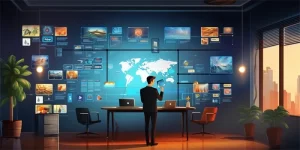With the development of artificial intelligence (AI), transforming ordinary images into captivating artwork has become easier than ever. AI-based filters are revolutionizing the way we enhance and modify our photos, unleashing our creativity. In this article, we will explore the various aspects of using AI-based filters to transform images into stunning pieces of art.

1. Introduction to AI-based filters
AI-based filters are algorithms that use machine learning techniques to apply artistic styles to images. These filters are trained on vast amounts of data, including famous artworks and photographs. By analyzing patterns and textures in the training data, AI algorithms can recreate those styles on new images. The result is a fusion of the original image and the artistic style, producing striking and visually captivating artworks.
2. Advantages of using AI-based filters
AI-based filters offer several advantages over traditional manual editing techniques. Firstly, they save time and effort as the entire transformation process is automated. Secondly, they provide a wide range of artistic styles to choose from, allowing users to experiment and find their unique creative expressions. Additionally, AI-based filters ensure consistent output quality, removing the need for extensive technical skills.
However, it is important to note that AI-based filters are not magical solutions. They have limitations and may not always produce the desired result. Therefore, it is crucial to experiment with different filters and adjustments to achieve the desired artistic effect.
3. Popular AI-based filter applications
There are numerous applications available that leverage AI-based filters to transform images into artwork. One notable example is “Prisma,” a popular app that offers a wide range of styles inspired by famous artists such as Van Gogh and Picasso. The app gives users the freedom to adjust the intensity of the style and even combine multiple styles to create unique artwork.
Another popular application is “DeepArt.” It allows users to upload their images and apply various artistic filters, including styles inspired by abstract art, impressionism, and surrealism. The app also provides advanced settings, such as blending modes and texture adjustments, to fine-tune the final result.
4. How to use AI-based filters effectively
To achieve the best results when using AI-based filters, consider the following tips:
– Choose an appropriate image: Some images work better than others with certain artistic styles. Experiment with different images to find the perfect match.
– Adjust the intensity: Most AI-based filter applications allow users to control the intensity of the style. Finding the right balance between the original image and the applied style can make a significant difference.
– Combine filters: Don’t be afraid to mix and match different filters to create unique and captivating artwork. Combining styles can result in stunning and unexpected outcomes.
5. Frequently asked questions
Q: Can I use AI-based filters for commercial purposes?
A: It depends on the terms and conditions of the specific application or software you are using. Some may require a commercial license for commercial use.
Q: Do AI-based filters work equally well on all types of images?
A: No, the effectiveness of AI-based filters can vary depending on the content and quality of the image. Experimentation is key to finding the best results.
Q: Are AI-based filters limited to just visual art styles?
A: No, AI-based filters can also emulate other artistic mediums such as watercolor, pencil sketch, and even comic book styles.
6. Conclusion
AI-based filters have revolutionized the way we transform images into artworks. With their ability to replicate various artistic styles, these filters provide a new level of creativity and convenience for users. By exploring different applications and experimenting with settings, individuals can unlock their artistic potential and create stunning masterpieces.








